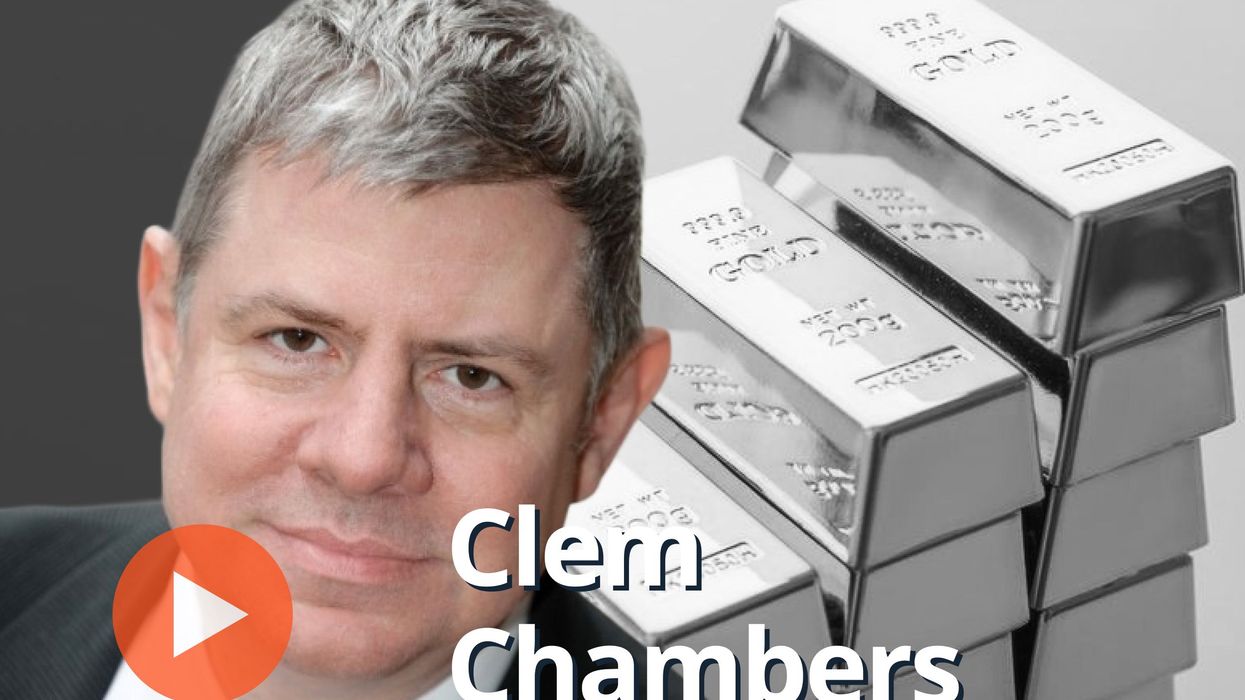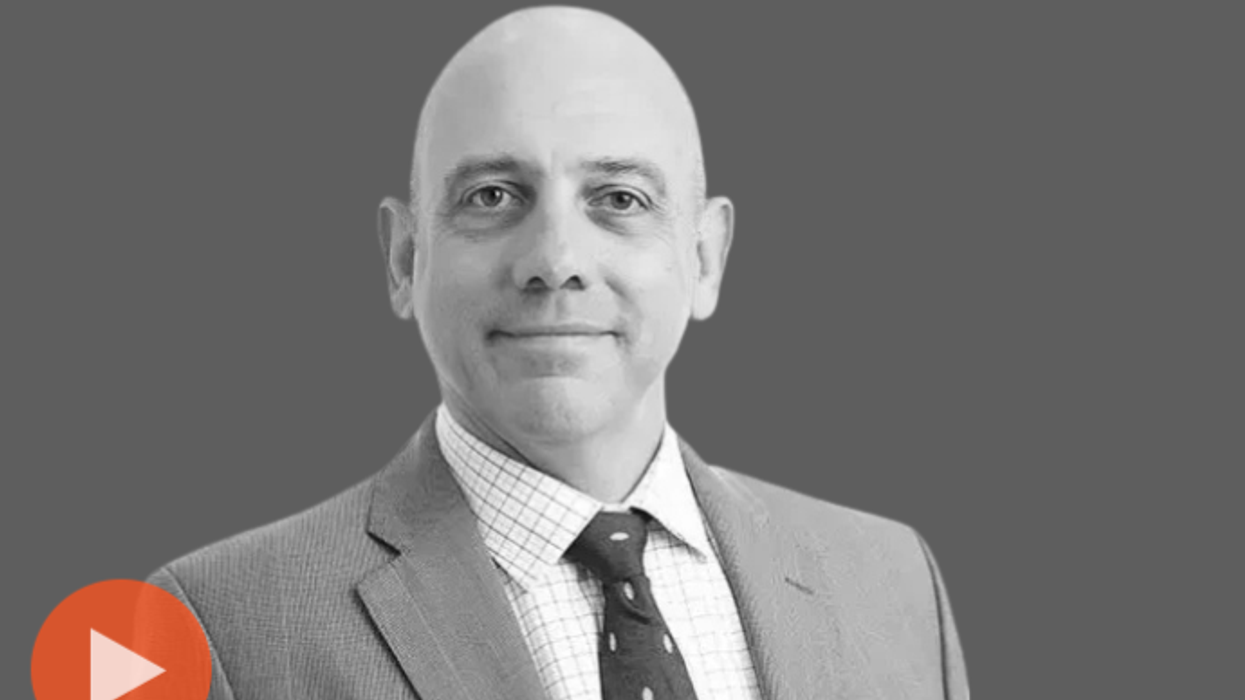
Uranium Outlook 2021: Positive Fundamentals Point to Growth
At INN Georgia covers a wide range of topics, including energy, battery and critical metals and diamonds. In her spare time, Georgia enjoys watching documentaries and experiencing Toronto's vibrant food, arts and cultural scene.
2020 was an eventful year for uranium, but what’s the uranium outlook for 2021? Experts weigh in on supply cuts, rising demand and more.
Click here to read the latest uranium outlook.
The uranium spot price has held firmly in the US$29 per pound range since September, solidifying its stellar performance in a year with rampant global disruptions and production issues.
Despite being US$21 short of the US$50 threshold often cited as the level that will incentivize projects, the U3O8 spot price has added 21 percent to its value year-to-date, and 37 percent from its January low to its May high.
The start of the year saw depressed prices sitting at the US$24 mark. But supply constraints related to transportation began to emerge in March, pushing prices to US$27.
COVID-19 lockdowns in Canada forced Cameco (TSX:CCO,NYSE:CCJ), a leading producer, to curtail its only operating mine in Canada, which significantly impacted global supply and pushed the U3O8 spot price north of US$30 for the first time since 2016.
As Philip Johnson of research firm UxC explained, Cameco’s temporary shuttering of the Cigar Lake mine in Saskatchewan was just one of the catalysts that helped send U3O8 values to a four year high.
Johnson, who is vice president of fuel cycle at UxC, said that moves from Kazakhstan’s Kazatomprom were also a catalyst. Kazatomprom is the largest uranium producer globally, and it has reduced its 2020 guidance and halted development into 2021.
“Other uranium projects in Namibia and South Africa experienced COVID-19 pandemic-related production declines, albeit to a lesser extent,” said Johnson. “The market is also preparing for imminent loss of production of two longstanding mines in Australia (Ranger) and Niger (Arlit).”
The massive output decline pushed prices to US$33.93 in May, the highest value year-to-date.
In addition to having to drastically reduce production, both Cameco and Kazatompom have been forced to make spot market purchases, adding more demand in a poorly supplied market.
Uranium outlook 2021: Bull market or short-term rally?
Complete uranium output numbers for 2020 are still a few months away, but during an April webinar, Johnson and UxC estimated that production will be reduced by as much as 13.1 million pounds, representing a 9 to 12 percent drop from the firm’s pre-pandemic forecast.
In 2019, output from all countries was 64,566 tonnes, or 142.3 million pounds, accounting for 81 percent of all global demand. A 13 million pound decline into 2021 will likely continue to support a higher price.
“When (prices) recovered, I think people started to take more notice,” said Nicolas Piquard, vice president, portfolio manager and options strategist at Horizons ETFs (TSX:HURA).
“Uranium was one of the best-performing commodities (in 2020) with gold, one of the few commodities that was up on the year.”
Given that current uranium supply can’t meet existing demand, another factor that could motivate prices is an increase in demand.
Persistent production disruptions in 2020 and into 2021 could be the catalyst that brings utility companies to the table after years of speculation about when they will draft new supply deals.
It is believed that a sinking uranium price in 2018 and 2019 kept electricity-generation companies from penning deals, something that Piquard thinks will change as prices continue to climb.
The potential for utility companies to come to market will also be intensified by a decrease in the amount of U3O8 Japan is selling into the market.
“All those things are kind of changing,” he said. “Now when (utilities) see the price go up, they might decide, well, maybe now it’s time for us to make sure the supply is there for us as well. So I think it changes the dynamic a little bit.”
Independent Speculator Lobo Tiggre also sees these pending contracts as a price catalyst.
“In my opinion, the biggest factor is that secondary supply is no longer flooding the market,” said Tiggre.
When asked what factors he will be watching in terms of price motivators into 2021, the CEO of Louis James was adamant about utility contracting.
“The big one is news of new long-term contracts between the utilities and the big miners,” he said. “This is the logjam that changes everything when it breaks.”
Uranium outlook 2021: Juniors anticipate bull run
As major miners curtailed production and redrafted their yearly guidance, juniors were left in a precarious position as well. A rising spot price did improve their endeavors, but with travel restrictions and lockdowns in place, advancing projects was challenging.
While the U3O8 spot price did increase considerably over the year from January, Curtis Moore of Energy Fuels (TSX:EFR,NYSEAMERICAN:UUUU) explained that is only a small part of the larger sector.
“The spot market is driven mainly by traders and intermediaries, often transacting the same material amongst themselves,” explained Moore. “Utilities and producers occasionally dip their toes into the spot market to transact small quantities. But the ‘real’ market among suppliers and utilities is opaque, and many transactions involving utilities are not reported.”
Moore, who is vice president of marketing and corporate development for the American resource company, went on to note that prices still remain below what is needed to ramp up production.
“We have seen activity increase in 2020, but prices are still below the global cost of production, indicating that there is still inventory being fed into the market, including underfeeding and lowered tails assays (features of enrichment that compete with uranium mining),” he said.
“However, by their nature, inventories are finite,” Moore continued. “They are depleting and must be replaced at some point at a price that incentivizes mine production. And this price level is much higher than what we see reported today.”
For Canadian uranium explorer and developer IsoEnergy (TSXV:ISO,OTCQX:ISENF), the widespread disruptions of 2020 are laying the foundation for better prices ahead.
“Uncertainty was the biggest challenge for 2020 in the uranium industry. Uncertainty around COVID-19-related mine shutdowns, signing of the Russian Suppression Agreement, US election and overall volatility of the stock market,” said Keith Bodnarchuck, corporate development manager.
“As 2020 comes to an end, clarity is starting to appear for some of these uncertainties, which should allow for the underlying fundamentals of a uranium bull market to once again become the focus.”
Energy Fuels’ Moore shares the sentiment that years of stagnation have led to uranium’s moment.
“We think there are definitely better uranium markets ahead,” he said, citing demand outstripping supply, inventory shrinkage, deposit depletion and continued high grading as signs that point to price increases ahead.
“The realizable sales price for uranium is below most miners’ cost of production, which is unsustainable,” he said. “In many ways, history is repeating, and we might be in the beginning of the next run in uranium prices. We don’t know when the market will recover, but it will.”
That optimism was also echoed by James Sykes, CEO and president of Baselode Energy (TSXV:FIND,OTCQB:BSENF). The leader of the Canada-focused explorer anticipated that utilities would sign contracts in 2020, something he now expects to happen in 2021.
“(Long-term) contracts sound like they will start being signed,” he said. The Baselode head believes the spot market will appreciate, and government green energy deals will help encourage the erection of new nuclear projects, including small modular reactors (SMRs).
All three companies remain hopeful that 2021 will be a better year for the overall uranium market.
Uranium outlook 2021: Energy security issues
In addition to COVID-19, the US presidential election has been a major topic in the energy sector.
Prior to the November vote, US President Donald Trump had called for the building of a strategic uranium stockpile. US$150 million was to be spent annually over a decade to amass the reserve, a proposal born out of the president’s Section 232 investigation into the security of uranium imports.
Experts are unsure if Joe Biden will back Trump’s stockpile proposal, although the president elect appeared to be pro-nuclear energy on the campaign trail, noting that he would support the advancement and implementation of SMRs. Whether nuclear energy will be a top priority of the Biden administration remains to be seen, but as Piquard pointed out, for a president inheriting a deeply divided government, nuclear may be the one issue everyone can get behind.
“I think there’s a real need for the Biden administration to work together with Congress, which is going to be a Republican Senate for now, anyway, and a Democratic House,” he said.
He believes it may be diplomatically advantageous for the incoming head of state to choose an agenda that can be viewed as non-partisan. “Nuclear energy is one of the things where they might be able to get along and work on something together. I think there’s a real need for more bipartisan action.”
For Johnson, whether it’s Biden’s positive attitude towards nuclear or Trump’s stockpile, neither will lead to significant growth overnight.
“Establishing a uranium reserve in addition to a somewhat nuclear-friendly incoming presidential administration are definitely positive influences on the market at hand,” he said. “However, it’s important to note that both initiatives will likely only show real market impacts over the longer term.”
In terms of SMRs, Johnson also expects a more prolonged timeline, especially in light of recent developments. “The US’ best chance to get an SMR online in the near term involves (Utah Associated Municipal Power Systems’) project to build NuScale SMRs at Idaho National Lab,” he said.
“However, even under the current pro-nuclear Trump administration, the project is encountering some serious headwinds as several of the municipalities behind the project have recently backed out due to rising project costs. Thus, the SMR project, much like the uranium reserve, will likely only impact the market over a longer-term horizon, if at all.”
Uranium outlook 2021: The year ahead
Looking into the new year, sector participants and analysts see prolonged production constraints pushing prices higher.
UxC’s Johnson pointed to Cameco’s decision to shut Cigar Lake down again following its September restart as evidence that the industry is not out of the woods in terms of COVID-19 impacts.
“The event underscores the fact that while many people believe the pandemic is nearing an end, there’s still a long way to go before it’s actually behind us,” he said. “Thus, the potential for suspensions or disruptions at other major uranium projects is still on the table to some degree. This will definitely be a major issue to monitor in at least the first half of 2021.”
When asked if 2021 will be the year utilities sign contracts, Tiggre responded jokingly, commenting, “Yes. I can’t prove it, but I think so.”
With prices steady in the US$29 range, another rally could even bring sidelined projects back online.
“But it takes the better part of a year for even a mothballed in situ recovery mine to ramp back up to full speed, so those are the ones I expect to deliver new uranium projects first,” said Tiggre. “Anything that still needs to be built will take much longer.”
Global demand is also anticipated to grow in the coming years. According to the World Nuclear Association, there are more than a dozen nuclear reactors slated to come online, followed by two years of steady rollouts. These developments are especially promising for junior companies.
“I am extremely bullish on the 2021 uranium market; new reactors are continually coming online, and sentiment towards nuclear is improving because nuclear power offers the only reliable carbon-free energy source,” said IsoEnergy’s Bodnarchuck.
“There will need to be a major price adjustment of uranium soon to accommodate an undersupplied market with growing demand.”
Don’t forget to follow us @INN_Resource for real-time updates!
Securities Disclosure: I, Georgia Williams, hold no direct investment interest in any company mentioned in this article.
Editorial Disclosure: Baselode Energy, Energy Fuels and IsoEnergy are clients of the Investing News Network. This article is not paid-for content.
The Investing News Network does not guarantee the accuracy or thoroughness of the information reported in the interviews it conducts. The opinions expressed in these interviews do not reflect the opinions of the Investing News Network and do not constitute investment advice. All readers are encouraged to perform their own due diligence.













